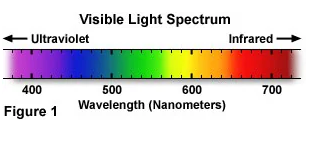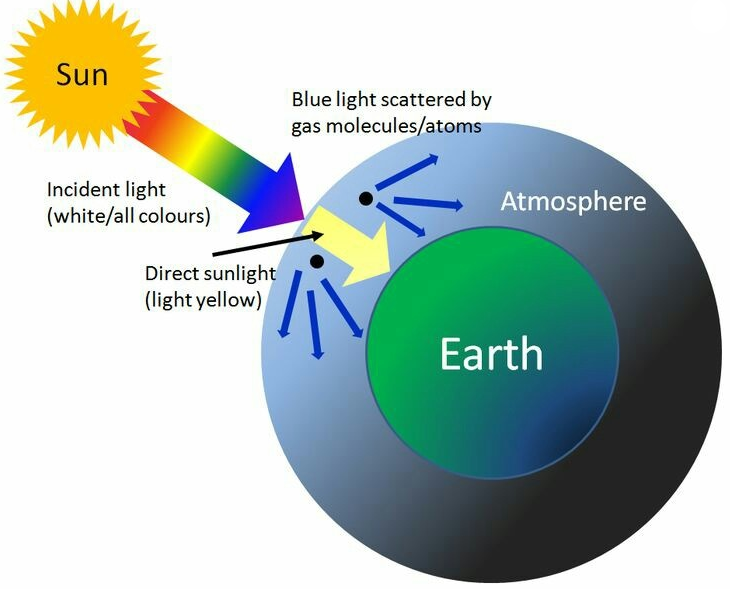Are you trying to decide between a cool blue laser sight and a stylish green one? It’s like choosing between two awesome options! Imagine you’re in the dark, and you need a laser sight to help you see better. Which color is brighter and works better, blue or green? Lots of people who really like guns have this same question. Let’s figure out together: Blue vs Green Laser Sights – which one is the best and shines the brightest?
Blue vs Green Laser Sights: Unveiling the Comparison
People are curious about which is better, blue vs green laser sights. The blue and green laser sights are powerful, but we want to find out which is the real star in the dark. Let’s break it down step by step.
Wavelength and Visibility:

Green Light Wavelength:
Green laser sights usually shine light at a color that our eyes really like – it’s around 532 nanometers. This color is right in the range that our eyes see best, so green lasers are easier to see compared to blue ones.
Blue Light Wavelength:
Blue lasers usually shine light at a color that is about 450 nanometers long. Even though we can see this light, our eyes aren’t as good at seeing blue as they are at seeing green. This makes blue light seem less bright to us.
Seeing in the Dark and Daylight:
Our eyes have two main ways of seeing things: in low-light conditions and in daylight or well-lit areas. The colors we see can affect how well we see in different situations.
Why Green Lasers are Bright: Green light is easy for our eyes to see, whether it’s dark or bright outside. This makes green lasers seem brighter in all kinds of lighting.
Problem with Blue Lasers: Blue light doesn’t work as well for our eyes in both dark and bright conditions. This can make blue lasers appear less bright, especially when it’s not very bright around.
In simple terms, green lasers work better in different lighting, while blue lasers might not be as bright in certain situations.
Atmospheric Scattering:

When we talk about atmospheric scattering, it’s like thinking about how things look in the air outside. Imagine you have a laser beam, like the ones you see in movies or presentations. The color of the laser beam can affect how far you can see it.
Green Light Travels Farther: If the laser beam is green, it’s easier to see over longer distances outside. This is because green light doesn’t get scattered as much as blue light does in the air. So, green lasers can stay bright and visible for a longer distance.
Blue Light Doesn’t Travel as Far: On the other hand, if the laser beam is blue, it might not stay as bright when it travels through the air. Blue light tends to get scattered more, making it harder to see over long distances. This means that blue lasers may not look as bright as green lasers when they travel through the air outside.
Human Vision Sensitivity:

Green Sensitivity: The human eye is more sensitive to green light due to the distribution of photoreceptor cells in the retina. This heightened sensitivity contributes to the perceived brightness of green lasers compared to blue lasers.
Blue Sensitivity Limitation: Blue light, while still visible, does not leverage the same level of sensitivity in the human eye, impacting its overall brightness, particularly in situations where visibility is crucial.
Simple Tips for Your Choice
- Consider if you’ll mostly use it in bright or low-light places.
- Check visibility: See how well each laser shows up in different lighting.
- Go with what you like: If you have a favorite color, let that play a role.
- Try before buying: If you can, get hands-on to see which feels right.
Now you know which laser sight is brighter between blue vs green laser sights. You can read our comprehensive buyer’s guide on Glock laser light.
End thought:
So,this is all about blue vs green laser sights, use this info to decide whether you’re leaning towards the vivid green or the cool blue. The comparison isn’t just about brightness; it’s about tracing ability and how well the sight adapts to various lighting situations. Personal choices play a vital role in this decision-making process.
FAQs:
What distinguishes blue from green laser sights in terms of brightness?
Blue and green laser sights emit light at different wavelengths, impacting their perceived brightness. Green wavelengths often appear brighter to the human eye due to their higher sensitivity. Still, individual perceptions may vary based on environmental conditions and personal preferences, making both colors competitive.
Is one color universally brighter, or does it depend on specific conditions?
The brightness perception between blue and green laser sights is sometimes universally consistent. In some situations, green lasers might appear brighter due to the eye’s heightened sensitivity to that wavelength. However, environmental factors, distances, and personal visual acuity are vital in determining more brilliant colors.
How does personal preference play a role in choosing blue and green sights?
Personal preference heavily influences the selection process between blue and green laser sights. Some individuals might find the green hue more appealing and accessible to track, while others might prefer the uniqueness and potential advantages of the blue laser. Deciding factors often include comfort, visibility, and overall satisfaction with the chosen color.
Can the brightness of these laser sights be tested in various lighting conditions?
Testing the brightness of blue and green laser sights across different lighting conditions is essential. Experimenting in varied environments helps gauge how well each color performs in low light, bright settings, or daylight. Such tests provide a clearer understanding of visibility, aiding in making an informed decision.
What factors, besides brightness, should be considered when choosing a laser sight color?
Besides brightness, factors like visibility in different lighting, user comfort, and ease of tracking the laser’s path are crucial. Considering the shooting environment, personal visual preferences and potential advantages in specific scenarios can guide the choice between blue and green laser sights. Balancing these elements ensures a well-informed decision beyond just brightness.